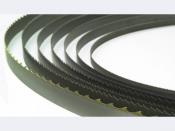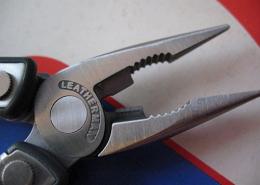Search
Login
Recommended
What are pliers, types of pliers, how to choose the right one, business advice
What pliers or their more highly specialized fellow pliers know not only a professional plumber, electrician or carpenter, but also a housewife, fond of needlework. And all because each self-respecting not only a master, but also an ordinary man, in his home, not professional, tool kit has such a versatile and multifaceted tool as pliers universal pliers and wire cutters in one, as they say, bottle. About what types of pliers are, how they differ from pliers, how they can be used, and which pliers are best to choose for the successful completion of a specific task, we will tell in our article.
Content
- Pliers: a little confusion in the definitions video video video
- Pliers: types
- How to choose the right pliers video
Pliers: a little confusion in the definitions
Arriving at the construction tool store for simple, as it seems, at first glance, pliers, you can easily get lost and get confused in their assortment, types and definitions that give this tool.
Someone, at the request to show him pliers, can get a tool with a pliers marking, and someone will be told about the advantages of pliers, because outwardly they are very similar to pliers.
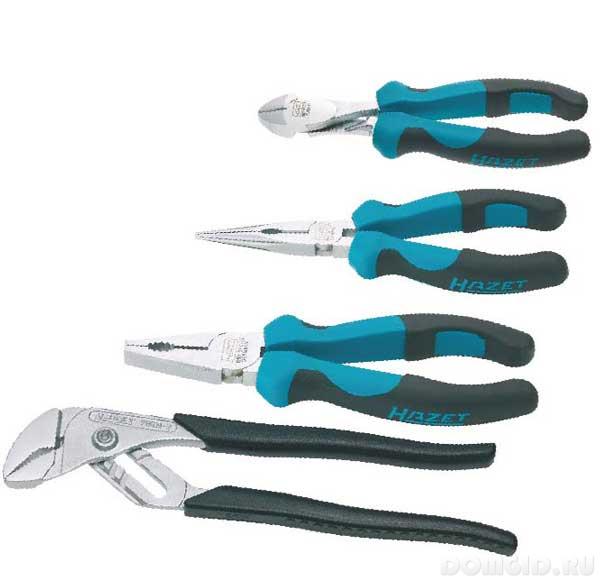
So what are ticks, pliers and pliers, after all?
All these tools are the same in that they have the same structure and belong to the articulated-lip instrument.
That is, they all have a handle for holding the tool, sponges (the part used for gripping and clamping), a swivel that fastens 2 stamped steel parts of forceps, pliers, pliers, in a single mechanism.
Now let's figure out what is what: what are ticks, pliers, pliers.
Ticks this is a kind of metal tongs, with rounded ends of the jaws designed to grip and hold something.
Pliers these are ticks in which the inner surface of the lips is flat (for another type of tick, round-nose pliers, this surface is round, as is already known, from their name).
And finally pliers– these are, in fact, universal pliers, universal combination pliers (there are also other types of them) combining both pliers and nippers, side cutters, and sometimes a screwdriver, an awl (placed on the handle of pliers), etc.
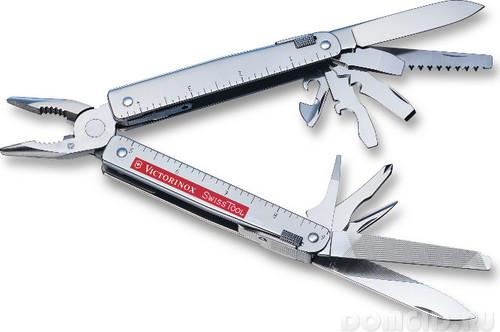
That is, pliers are a more versatile hand, metal, plumbing, carpenter, electrician and even seamstress tool. And, like any universal tool, well accustomed and widely used in everyday life.
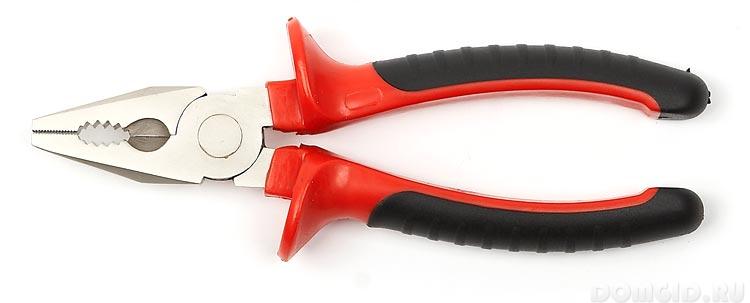
How pliers differ from pliers, it also becomes clear from the definition: the possibilities of use.
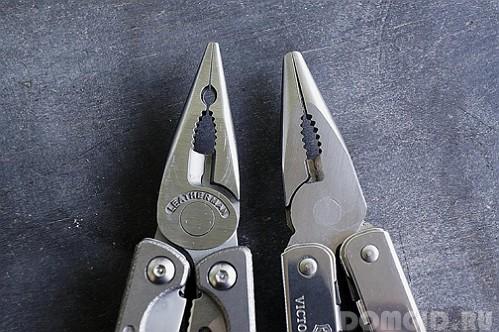
Pliers use, if you need to grab, hold something, pull out a nail, bend, wind the same nail or wire.
Pliers allow you to add to the capabilities of the pliers also cutting, biting the wire, nails, bolts, stripping and crimping the electrical wires (press tongs).
That is, if pincers or some kind of pliers can also cut wire or nail, then this is already pliers.
Pliers: types and scope
Although the pliers tool is universal, combination pliers,
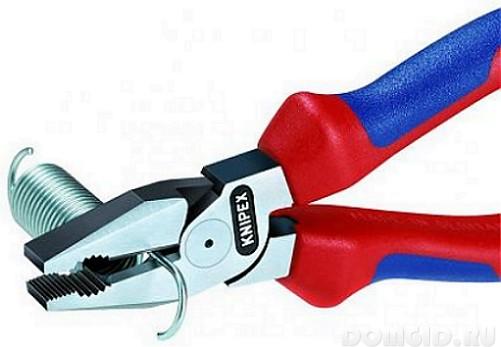
nevertheless, their highly specialized types are more professional, simple and reliable in using specific types of operations:
- dielectric pliers:
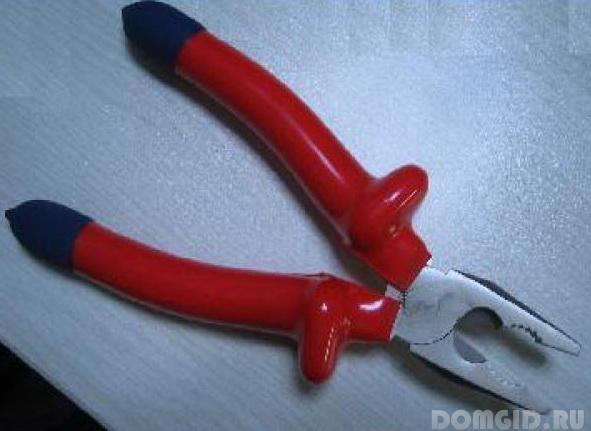
externally and functionally an analogue of combination pliers, but equipped with special insulating handles that allow working with wires and electrical appliances that are energized. That is, using such pliers, it is possible to install or replace electrical wiring, install or repair electrical equipment, install or replace electric meters (if you have certain special skills). Therefore, it is quite natural that dielectric pliers are a mandatory and practically, basic, electrician tool.
- pliers for eyelets:
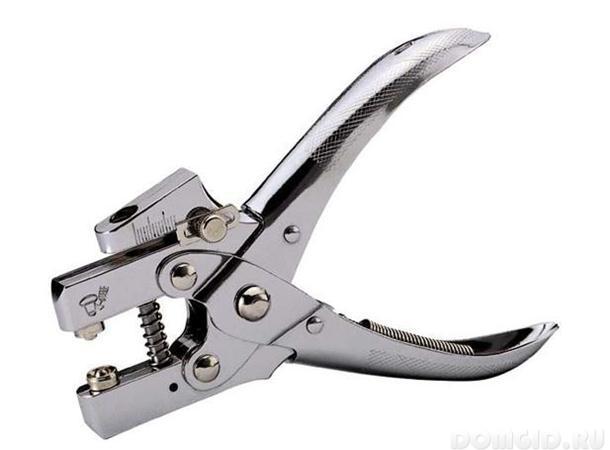
a rather highly specialized, but very popular type of pliers in everyday life. Because does not require special skills for working with this type of pliers and is used to install grommets (rings with a sufficiently diverse diameter), which are successfully used not only to create fasteners for stretch marks and outdoor advertising banners, but also as fasteners for ordinary curtains,
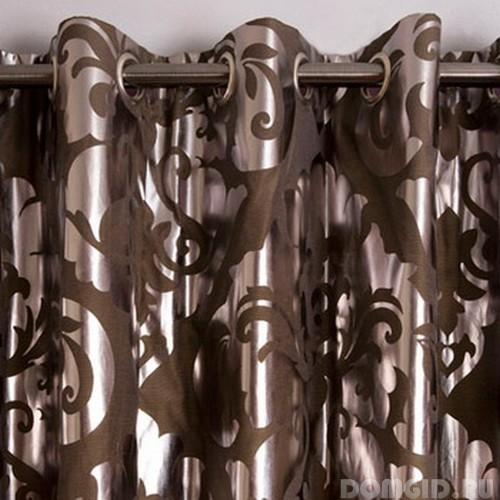
as an essential component in the construction of Roman curtains,
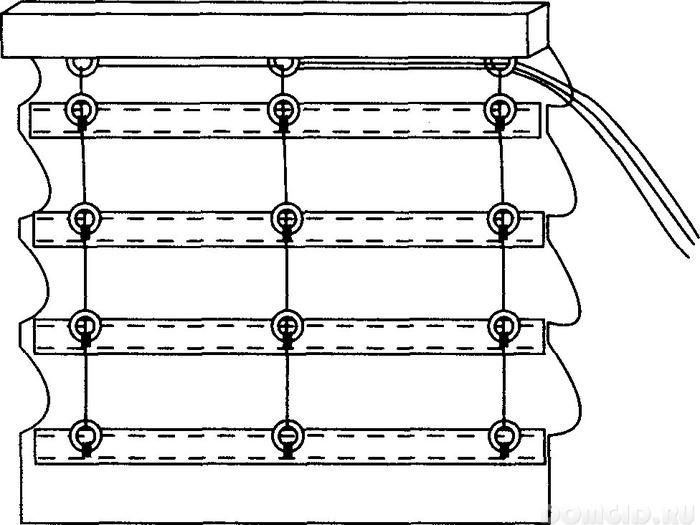
in clothes and shoes and where imagination allows.

- adjustable combination pliers (often a synonym for this tool is pincers peremeshny, pliers peremeshivayuschie or pipe)
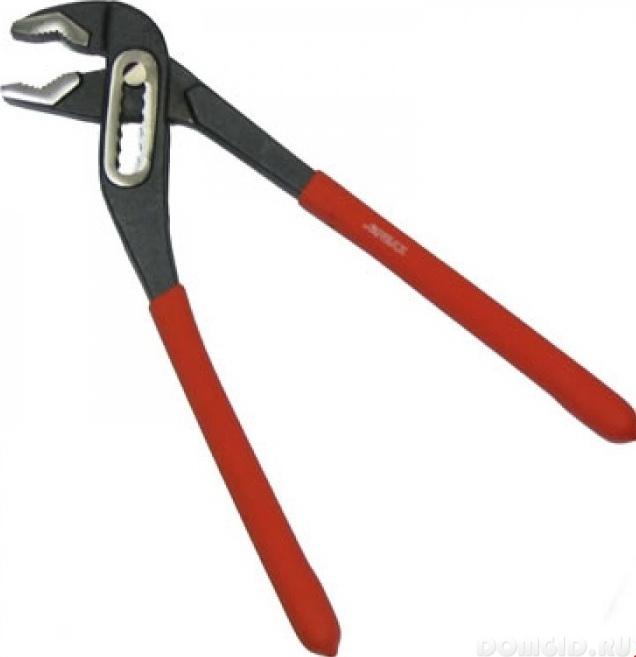
look like combined pliers, but with the possibility of regulating the opening of the sponges. They are used for gripping, holding various sizes of parts, wires and pipes, as well as cutting thick cable. Additionally, they can also be used as a wrench.
How to choose the right pliers
When choosing pliers, you need to specifically understand what you need them for.
If you want to do needlework, you need pliers for grommets, and if you need small repairs around the house, then you certainly can not do without combined pliers.
Electrician dielectric pliers, plumbing combined adjustable pliers,
a carpenter carpenter certainly can not do without a set of combination pliers with different long jaws.
Otherwise, the following rules should be observed.:
- if you are a specialist in any construction and installation industry, choose a specialized tool, but combined pliers are enough for the house.
- A good quality tool, made of high-quality steel, a well-known brand, and therefore can not cost a penny.
- the lighter the tool is by weight, the easier it is for them to work, the longer they’re tired. True, you need to ensure that weight loss does not affect the quality of materials used in the manufacture of pliers.
- correctly selected handles ease of use of all types of pliers. That is, the handles should be rubberized so as not to slip, with an emphasis on the fingers, so that, during the operation of the hand, the finger does not come off and are not injured.
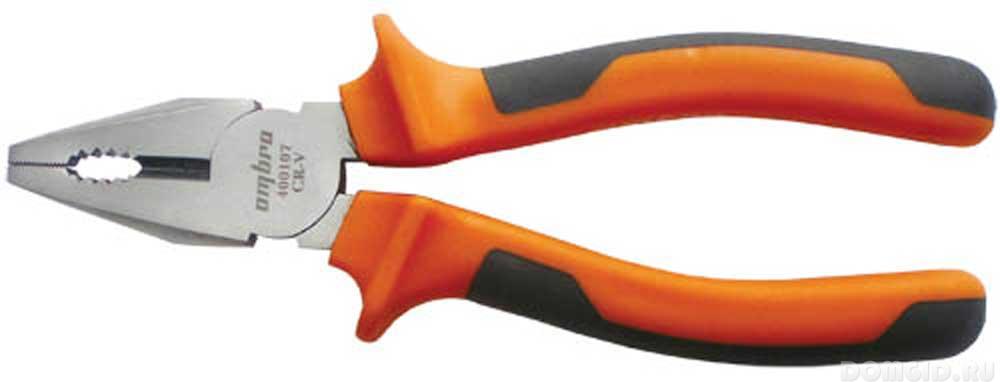
- pliers must cope well with the manufacturer's declared work: it is good and easy to cut the electric wire or just one of its wires.
- Professional pliers are sold, often enough, in a set with other pliers and screwdrivers, in a specialized plastic box-case for the tool, and this makes it easy to store and transport the tool.



